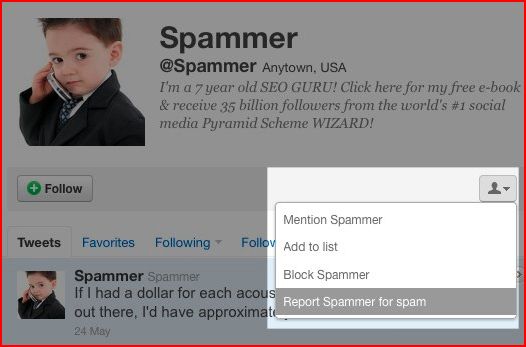 Businesses that count on their website to attract customers rise and fall on the strength of their Google ranking. Google’s recent updates to its search algorithms, the so-called Panda and Penguin changes, have had a measurable impact on the ranking of thousands of websites. Whether you have a business website or are thinking of starting one, you need to factor in the “Google Zoo” when developing your online strategy.
Businesses that count on their website to attract customers rise and fall on the strength of their Google ranking. Google’s recent updates to its search algorithms, the so-called Panda and Penguin changes, have had a measurable impact on the ranking of thousands of websites. Whether you have a business website or are thinking of starting one, you need to factor in the “Google Zoo” when developing your online strategy.
According to SEOmoz, Google developers tweak their search algorithms about 500 times per year in order to thwart spammers and ensure the quality of their search results. Most of the Google search engine changes are small, but a couple of recent updates sent traffic levels for some legitimate websites into a nosedive. No one who wants to grow their business with an online presence can afford to ignore the so-called Panda and Penguin changes. Here’s what you should know:
Panda
Released in February 2011, the Panda change penalized websites with poorly written or duplicate content. It lowered the ranking of spammy websites with high ad-to-content ratios and gave higher ranking to sites with unique, relevant and high-quality content.
Penguin
Rolled out in April 2012, this change tightened the Google search algorithm’s ability to filter out web spam techniques, like content spinning, keyword stuffing and unnatural linking. Many sites that went overboard in their use of keywords were hit by the Penguin change.
In the months following the Panda and Penguin changes, SEO experts have determined the new best practices for search engine ranking. Google also provides advice and support in the form of its Search Engine Optimization Starter Guide (available on the Google Webmaster Tools page). A few pointers include:
- Add compelling and useful content to your website in the form of articles, blog posts, forums, social media services and other means. Remove content that’s too generic or duplicated too often elsewhere.
- Attract repeat visitors with fresh, easy-to-read content that’s free from spelling and grammatical errors. Make sure your site is well organized so visitors can quickly navigate to the information they need.
- Incorporate keywords naturally into your content. They should not interrupt the flow of your website’s content or appear to be inserted after the content was written.
- Avoid unnatural anchor text. The text should tell the user something about the external page that’s being linked to from your website.
- Watch your ad-to-content ratio. First and foremost, provide your visitors with relevant content instead of hitting them over the head with advertising.
Other Considerations
In addition to considering Panda and Penguin when constructing and updating a website, it’s important to pay attention to how a website is promoted. Organic links that occur naturally when people discover your content and link to it are the best. This takes time, and Google understands that businesses need website promotion to speed up discovery of their content. Blog posts, press releases, newsletters and RSS feeds are Google-approved promotion techniques. Social media sites like Facebook and Twitter can also be used for promotion, provided the social updates aren’t too frequent. Marketing through article directories like Ezinearticles, Squidoo and HubPages, once a successful strategy for improving search engine ranking, now can hurt more than help a website.
]]>
Infographic by- GO-Gulf.com Web Design Company ]]>

Recently while conducting research on behalf of a financial services company I work with I was quite surprised to see that several of its well known competitors are Twitter spammers. These companies, who are in the commercial lending business, are mass following other accounts only to then unfollow these companies once they have artificially inflated their followers. According to Twitter the practice of “aggressive following behavior“, once reported, will be investigated by Twitter for further action including losing your account.
How do I know they are Twitter spammers? Just by looking at the number of companies they follow versus the number that follow them back. Once a Spammer is followed back, they often then drop the company from the list they follow in order to artificially pump up their numbers. In addition, I can also tell they are spammers because they have published very few tweets, but most telling and should be most embarrassing to them, the lists these companies are on. The companies are on very few lists and the majority of lists included titles including the words “Twitter Spammers.”
Is that the kind of influence they are really trying to achieve? Does their CEO realize the damage their “Twitter team” is doing to their brand? Or is the CEO oblivious which says even more about the company. But perhaps most importantly, is this the kind of company you want to borrow from for your business? Do you want to trust this company to safeguard your financial documents and reputation when they are so careless about their own?
]]>Check out the library of information and tutorials . ]]>

Brands flocking to Facebook in order to connect with young consumers got some bad news last week from Forrester Research. According to a new report authored by Jacqueline Anderson, Forrester’s Consumer Insights Analyst, a mere 6 percent of 12 to 17 year olds wants to be friends with a brand on Facebook. The percentage increases to 12 percent of 18 to 24 year olds wanting to be friends with a brand.
According to Anderson, “Many brands are looking to social media as a strong digital channel to communicate with these consumers. But research shows that it is important to consider more than just consumers’ propensity to use a specific channel. Almost half of 12 to 17 year olds don’t think brands should have a presence using social tools at all.”
There is a silver lining for brands. Although young Gen Y’ers may not want to be friends, 74 percent of them are using “social networks to talk about products with friends and make recommendations.” Are you listening to them?
]]>]]>

How often should you be emailing your customers or potential customers? How many tweets can you send out each day? How many is too many? How much contact is too much on Facebook? In order to find out why consumers terminate their relationships with Brands through Email, Facebook, and Twitter, Exact Target, a global Software as a Service (SaaS) provider, surveyed more than 1500 consumers and came up with a number of key findings that they reported today in “The Social Break-Up”.
Email Key Findings:
- 95% of US Online Consumers use email
- 91% have unsubscribed to a company email
- 18% never open email from companies
- 17% of subscribers will delete or ignore email instead of unsubscribing or hitting the spam button
- 49% unsubscribe because the content is boring or repetitive
Facebook Key Findings:
- 73% of US online consumers have a Facebook profile
- 65% of US online consumers are active on Facebook
- 64% of Facebook users are “Fans” of a company
- 51% of Facebook Fans of a company rarely or never visit a company’s page after liking them
- 44% of Facebook Fans unlike a company because they post to frequently
Twitter Key Findings
- 17% of US consumers have a Twitter account
- 9% of US consumers who have created a Twitter account are active
- 41% of consumers who have followed a company have stopped following them later
- Twitter users are less likely to unfollow a brand compared to Facebook or email users (41% for Twitter, 55% for Facebook, and 91% for email)
The question is, why have you unsubscribed to a Brand?
]]>